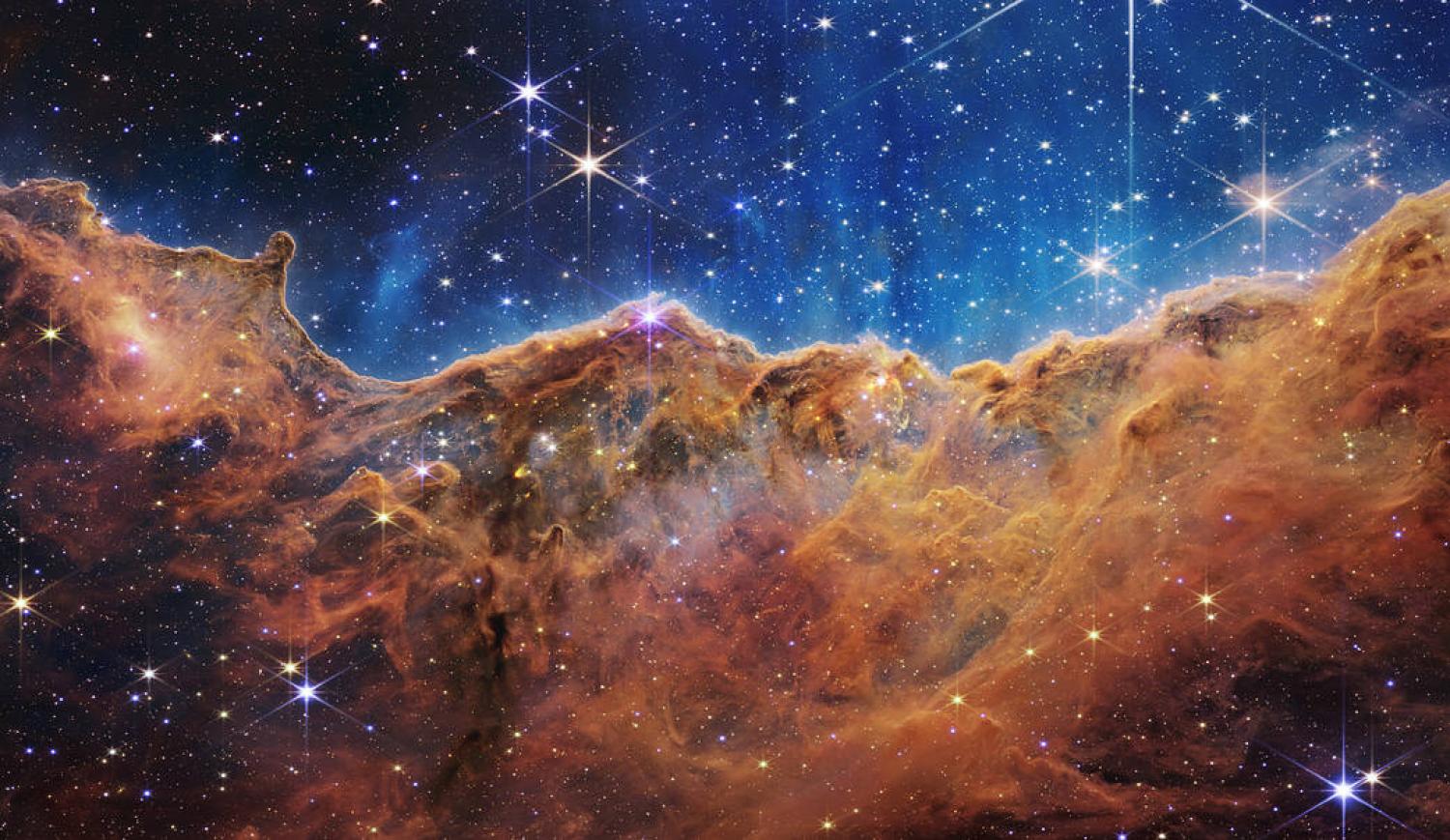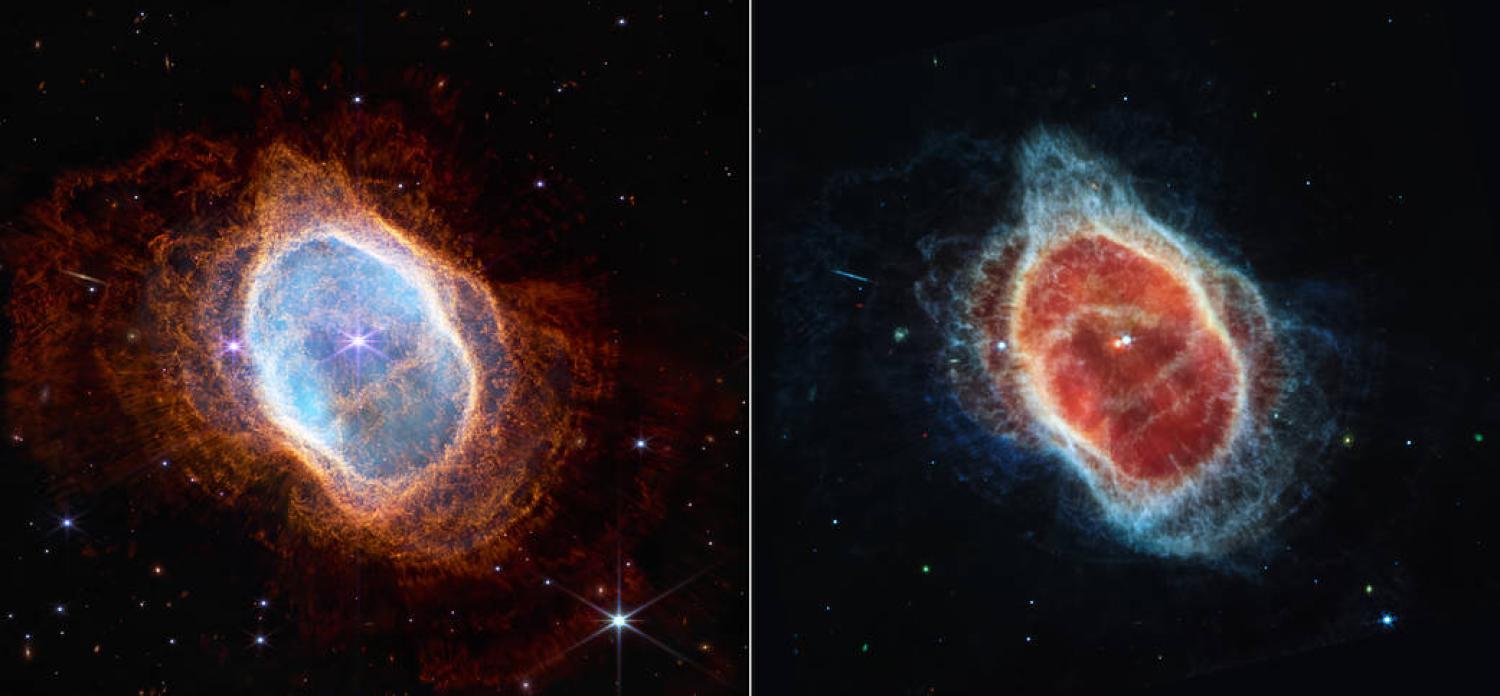Banner image: A new image from the James Webb Space Telescope reveals galaxies born during the first 1 billion years of the universe. (Credit:ŐżNASA, ESA, CSA, and STScI)
Take a peek at ‚ÄúCosmic Cliffs‚ÄĚ that stretch dozens of light-years across; bubbles of gas and dust expelled by a dying star; and the blur of galaxies that formed less than 1 billion years after the Big Bang.
This week, NASA released the first images taken by the ‚ÄĒan instrument that launched in December 2021 and carries the largest mirror ever to make it beyond Earth. These reveal the birth and death of stars, collisions between galaxies and the deepest look yet into space and time.Őż
ŐżLearn more about James Webb and its science goals
John Bally is a professor emeritus in the Department of Astrophysical and Planetary Sciences at ∂∂“ű¬√––…š Boulder and will dive into the new images at three events at the Fiske Planetarium (two of which are already sold out). He took a moment with ∂∂“ű¬√––…š Boulder Today to talk about these new images, why telescopes are like time machines and why, for James Webb, the best is yet to come.
What is so exciting about the James Webb Telescope and these new images?
Telescopes are like time machines. Because of the finite speed of light, the farther you look into space, the farther you see back in time. By looking ever farther into space with James Webb, we can reconstruct and literally watch the evolution of matter in the cosmos‚ÄĒfrom the very first galaxies up to the present. With luck, we can see the first stars to emerge from our universe, the first galaxies to emerge from our universe.Őż
Click to enlarge
Scientists can infer the existence of dark matter from the light emitted by galaxies in the cluster SMACS 0720. (Credit:ŐżNASA, ESA, CSA, and STScI)
Let’s start with an image that President Biden released on Monday of a galaxy cluster called . What are we seeing there?
This is an image of a cluster of galaxies located about 5 or 6 billion light-years away from us. The gravitational field of the galaxy cluster is acting as a natural lens to magnify and amplify the light of distant galaxies from the early universe.Őż
If you look at the image, you will see these arcs. Those are images of background galaxies that probably formed within the first billion years after the birth of our universe.
NASA has also touted it as the deepest image ever taken of the universe. Is that a big milestone?
It’s one of the deepest images taken so far. The Hubble Space Telescope spent 150 hours looking at patches of the sky, and this James Webb exposure was only about 12-and-a-half hours. You ain't seen nothing yet. Wait until James Webb takes images with exposure times of hundreds of hours. Then we will see things that we've never seen before.

Young stars form fromŐżclouds of interstellar gas and dust in the stellar "nursery" of the Carina Nebula. (Credit:ŐżNASA, ESA, CSA, and STScI)
Onto another image, this one looking at the and these soaring features that have been nicknamed the ‚ÄúCosmic Cliffs.‚ÄĚ Why did NASA choose to take a look at this nebula?
The Carina Nebula is one of the most massive and active sites of ongoing star and planet formation in our Milky Way Galaxy. It has formed thousands of stars within the last few million years.Őż
The James Webb image shows you part of the molecular cloud that is responsible for forming some of the stars. The particular field you can see here only contains a few young stars in the process of formation. But it shows you the structure and beauty of the interstellar clouds, which we think will in the near future collapse into young stars and planetary systems.Őż
And then these giants bubbles in space‚ÄĒthe . What‚Äôs happening in those images?
The Southern Ring Nebula is an example of what happens when stars like the sun die. In this case, one member of a binary star system expanded, transferred matter onto a companion star and, in that process, expelled a bubble of material.
Őż

In the Southern Ring Nebula, two stars orbit each other at a close distance. The star on the left has ejected material into space as it dims. (Credit:ŐżNASA, ESA, CSA, and STScI)
Click to enlarge
To produce this single look at Stephan's Quintet, scientists compiled about 1,000 separate images taken by James Webb. (Credit:ŐżNASA, ESA, CSA, and STScI)
Last, we’ll take a look at . Can you explain that image?
This image shows five galaxies. Four of them are about 350 million light-years away from us, meaning the light we see today left these galaxies 350 million years ago. These four background galaxies are orbiting each other, and, in fact, they're cannibalizing each other. We think the galaxies will eventually merge into one giant elliptical galaxy.
How do you feel looking at these images for the first time?
Awesome. There are something like 10 billion stars in our galaxy and something like 100 billion galaxies out there. Here you're only seeing a few hundred of them. The patch of sky in the image of SMACS 0723 represents a tiny, tiny fraction of the universe.Őż
What really excites me about James Webb is not what we expect to see but discovering things that we did not expect.Őż


